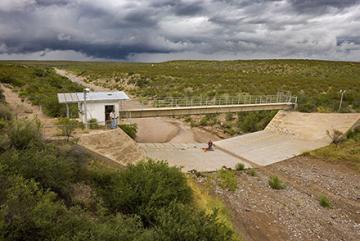Long-Term Data, Real-World Results

The Walnut Gulch Experimental Watershed is one of 18 research sites in the LTAR network.
By 2050, the world’s population is expected to grow to more than 9 billion people, posing a critical challenge to agriculture in the United States and globally to provide enough food, feed, fiber, and fuel to sustain us.
To provide the data to help meet these challenges, the Agricultural Research Service (ARS) created the Long-term Agroecosystem Research (LTAR) network in 2011. LTAR research takes a long-term perspective and provides a greater understanding of the complexity of agroecosystem landscapes.
The network includes 18 research sites that do long-term studies, and some of those sites have collected nearly 100 years’ worth of data. Researchers store the data in accessible formats that enable collaboration.
A timely example of the value of this research is a study recently published in Geophysical Research Letters by ARS scientists at the Southwest Watershed Research Center in Tucson, Arizona. Using data from a tight network of rain gauges at the Walnut Gulch Experimental Watershed, an LTAR site, the scientists were able to accurately measure, for the first time, the intensity of the highly localized monsoon-type rains that fall in the Southwest. They found that not only has the intensity of these rains increased over the years, but so has the number. The team’s observations and measurements validated computer-model predictions. Read more about the study here.
LTAR research focuses on how numerous factors and processes interact to affect agroecosystems over time, and it provides valuable insights that will help new systems to stand the test of time. Read more about LTAR here.—By Sue Kendall, ARS Office of Communications.
You May Also Like:

